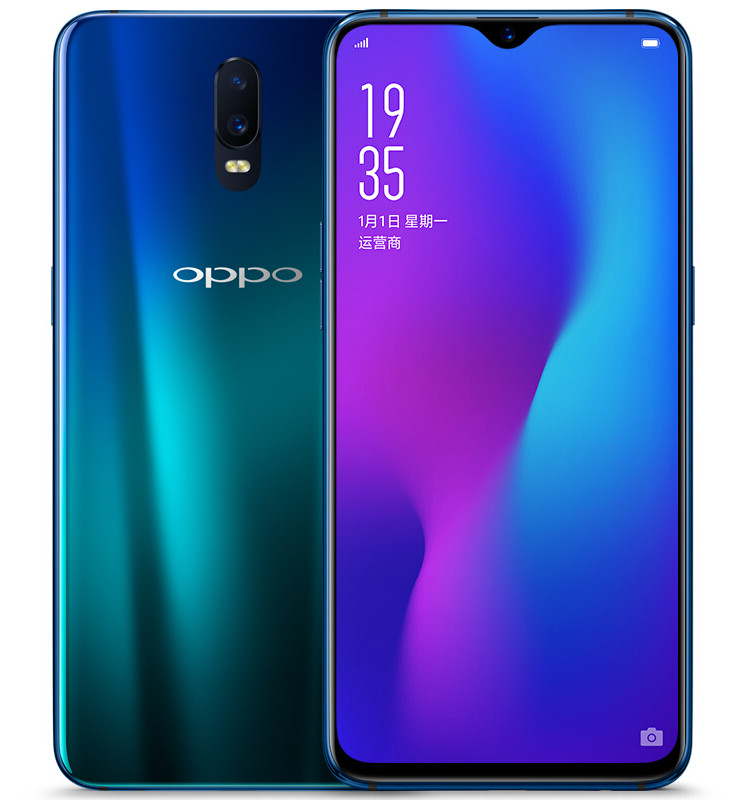After spending much of 2018 emulating and refining the “notch” full screen design first seen on the Essential PH-1 and more famously on the Apple iPhone X, it looks like Android manufacturers have heard consumers and turned the corner, reducing the size of the notch to maximise screen real estate.
In the last few weeks, we’ve seen Oppo’s R17 Pro (and the OnePlus 6T) launch with tiny “waterdrop” notch designs, and Samsung has shared their vision of how they see notches fitting into their future.
Great news! Samsung established the direction of mobile phone design in 2019!
On October 18th, Samsung Display invited about 20 customers to hold the "2018 Samsung OLED Forum" at the Shenzhen Marriott Hotel in China. At the meeting, Samsung showed a PPT pic.twitter.com/sYu0ORTd6V— Ice universe (@UniverseIce) October 19, 2018
It’s important to note that there are actually good reasons for the large notch on at least a few phones. Firstly, there’s necessary hardware in the front of a phone like the front-facing camera, proximity sensor and a speaker. On the Apple iPhone X, the notch also holds the infrared projector and camera that’s necessary to secure the device with a face unlock system (that’s not fooled by a photo).
However, most Android devices with a notched screen don’t actually include such hardware and are relying on software doing facial recognition using the front-facing camera. It’s why many Android phones have narrower notches, and why we’re starting to see wider ones as devices like the Oppo Find X and Huawei Mate 20 Pro add the necessary hardware to accomplish same.

We’re also seeing some clever attempts to work around the need for a notch at all. Multiple phones now offer popup cameras, and the Oppo R17 Pro hiding the front speaker/earpiece in the frame of the phone rather than the screen. We’ve seen the advent of the in-screen fingerprint reader, fulfilling a science-fiction fantasy of some years, and we’re also starting to see talk of in-screen cameras. Finally, we’ve also got clever software solutions that turn the screen black around the notch, effectively hiding it but using the area to display notification icons.
After staying relatively quiet on the issue of notches, Samsung recently shared their thoughts on the options they might offer in future phones including a design that seems to forego the “notch” element entirely – a cutout hole in the screen where the camera peeks though.

Rumours have since emerged claiming that 2019’s premier Galaxy S device will use the cutout hole design, and today we’re seeing Huawei offshoot Honor preparing to launch a phone that appears to use a camera cutout in mid-January.
The phone in question is the Honor View 20, a device whose specs are yet-unknown. But, the marketing campaign is reminiscent of Huawei’s glitzy launch of the P20 Pro in Paris earlier in the year, so we’d expect to see some form of Huawei’s Leica-developed the setup make an appearance on the phone.

It’s unlikely we’ll see the phone launch here, although we may see it appear in Huawei’s Nova line with another name. According to reports, Huawei’s fourth generation of Nova phones due to launch this month in China also includes a device with a camera cutout – maybe it’ll turn out to include the View 20 under another name.
This also plays into a new trend we’re seeing in the latter half of 2018 – new features and trends are emerging in midrange handsets – Samsung’s launching midrange devices with 3- and 4-camera arrays and camera cutouts, again in China. It’s a good way to test wilder features without risking a premier flagship flopping due to unforseen issues.
Android device manufacturers are experimenting, and that’s great. For too long we’ve seen a ton of similar-looking devices that are just a big screen with some features around it, and manufacturers often complain that they need a way to differentiate themselves in the market. It’s perhaps a little ironic that we’re finally seeing some real innovation now that we’ve arrived at a future where devices really are all the same in full screen phone designs.
The Future of the Notch?
It remains to be seen how consumers will react to the hole in their screen for a front-facing camera. It’s safe to say that the Android community hasn’t really been as welcoming to the notch screen designs as the iPhone community has, with controversy and conspiracy theories surrounding phones launching with notches in their screens as recently as October’s Pixel 3XL.
The camera cutout is definitely coming, but whether it ends up a footnote in our quest for the full screen future or the way forward will likely depend on consumers’ reaction to these early handsets.





I bought a Pixel 3 over the 3 XL because it didn’t have a notch. If they give you the option to hide the notch, why have it in the first place?
Camera cutout is looks like a giant dead pixel. It’s hard to unsee it.
Like the ugly notch, it sticks out like a sore thumb.
People used to complain about dead pixels. Now they like them.
I don’t see how the cutout is any better than the notch.
Just my 2 cents worth , but I much prefer a small cut out to a huge notch that reduces your notification bar down to nothing.
Having said that , I never saw the need to totally eliminate the bezel which not only gives a place for the notifications , but allowed the user to handle the device without putting greasy digits on the display .